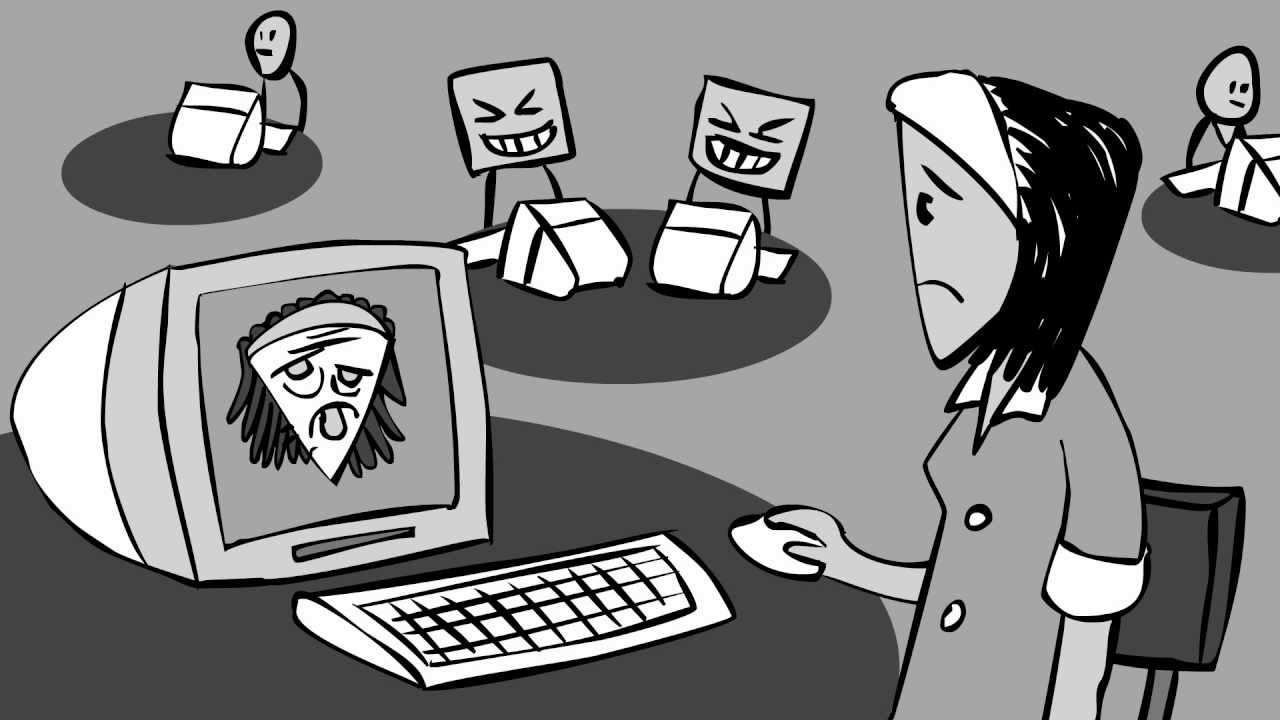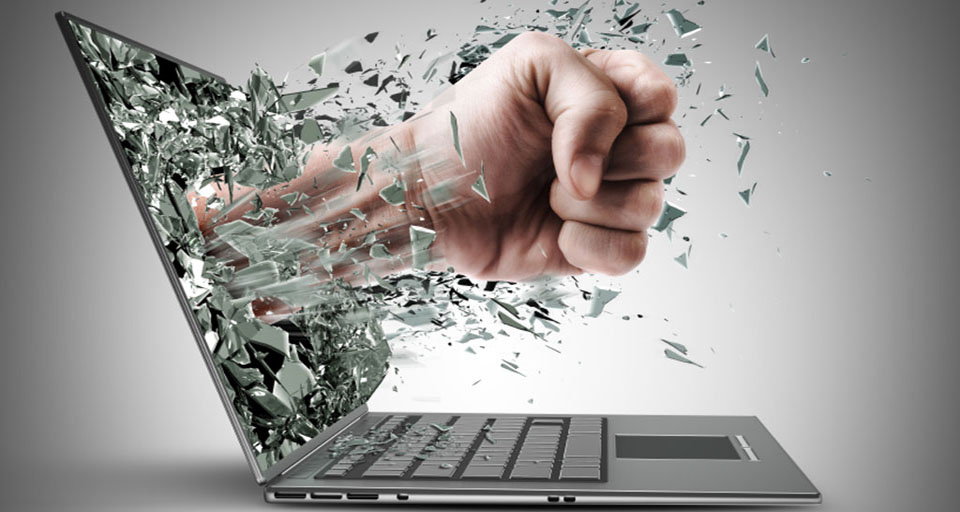Cyberbullying: How to deal with it
Melissa’s stomach tightened as she saw the Instagram post with a picture of herself bending down to tie her shoe. The comments above the unflattering image, all in caps, ‘Ever watch a cow tie her shoes? Well now you have!’ The additional comments were worse, comparing her to all manner of farm animals, circus elephants and worse.
This was the third time such an image of her was posted on a social media site for all to ridicule. She sat in the girl’s bathroom stall, knowing her world was falling apart and if she stepped out, she will be ridiculed; boys would make moo-ing or pig sounds as she walked down the hall to her class.
At a Glance
- What is Cyberbullying
- What should you do?
- What shouldn’t you do?
- Links to report bullying on Social Media
She wanted to know when it would end and secretly hoped they would find another victim for their cruelty. She felt very alone and had no-one she could tell, or so she thought.
Cyberbullying is one of the most hateful, hurtful and damaging forms of bullying. Although it has been hard to track in the past, that is changing as more and more internet and telecom carriers and civil authorities are taking a hard stand on cyberbullying.

Bullying used to be a push on the playground or the teasing of someone’s looks, or attire. It was physical, direct and very personal. However, it was localised.
Now, with the advent of Facebook, Instagram, SnapChat, WhatsApp and Twitter where images and comments are immediate and uncensored, anonymous abuse, cyberbullying now has a global platform. The issue does not only affect the intended victim, but offers a venue for the masses to witness, and then partake in the bullying as well. This makes the problem increase 100 fold, if not more.
There have been numerous cases in the past few years of cyberbullying being so extreme, it has lead to suicide or violent retaliation. In some of the more high-profile cases, murder charges have been brought against the bully, when a youth is pushed to the point of suicide.
This is not one-on-one bullying; it is essentially a ganging-up experience for the victim, with hundreds or maybe thousands seeing the comments or videos and adding to the situation by adding comments or sharing more broadly the contents. Worse, now videos and images stay on the internet for a very long time, for all to see.

While we associate cyberbullying with the young and tech-savvy, we have all seen it play out at the highest levels of government.
Like any abuse, the first thing any child or young person needs to do it report it to an adult. That can be a teacher, a parent, and older sibling or any trusted adult. You are not alone and do not deserve to be bullied by anyone.
The danger of cyberbullying is that is does not have a face. It is easy to abuse someone when you cannot see his or her face, or notice the pain that has been inflicted. It takes a coward and a weak person to be a cyberbully. People who do this often have many insecurities about themselves and their situation in life, and by making someone else feel bad, make themselves feel superior. They are then emboldened by others who join the abuse and add comment or insult.
What is cyberbullying? How is it defined?
A frequently used definition of cyberbullying is “an aggressive, intentional act or behavior that is carried out by a group or an individual, using electronic forms of contact, repeatedly and over time against a victim who cannot easily defend him or herself.” [i]
- Repeated behavior with an intent to harm
- Victims of bullying may end up with lower self-esteem
- Increased suicidal ideation, and a variety of emotional responses, retaliating, being scared, frustrated, angry, and depressed.
Victims often report that cyberbullying is more harmful than traditional bullying.

Community Centers and Schools have become much more aware of the devastating impact of cyberbullying and have put in place policies and disciplines to deter and address all bullying. Through education and prompt action, both bullies and victims will get a better understanding of the impact of bullying in all forms.
While it is easy to say ‘Just ignore it!’ In reality, it is not easy at all. Public humiliation and virtual finger pointing creates a toxic environment for a young person, affecting their performance at school, social interactions and destroys their self-confidence. There are sites that can help young people build the personal tools you need to deal with a bully. [ii]
What should you do?
Ignore: Do not respond to the bully in any form. By responding, you give them power.
Record: Document all messages, interactions and postings/comments. Print them and keep them to show to an adult.
ON Snapchat – do a screen capture on your mobile device or computer or report immediately (https://www.saferinternet.org.uk/blog/reporting-within-snapchat-stories)
Reach Out: Tell a trusted adult, immediately.
Cut off the bully: Block all lines of communication. Unfriend them on Facebook, block all social media accounts from yours and block their cell number or change your phone number.
Check privacy settings on your accounts – certain social media platform like Facebook lets you tighten your privacy settings, use this to lock down your own profile, live streams and photos that you share.
Report – Use the same technology to stop the abuse. Report the bullying to the internet provider, social media company or phone carrier. Bullying activity breaches all company terms of service and they (the bully) may be liable under the law for their activities. This is when your documenting of the abuse is essential.
In some cases, if video that is sexual in nature, the person or persons who post and share can be charged with possession of Child Pornography, and that is a federal offence. As well, reporting abusive or harassing material to the various carriers may result in the carrier themselves laying charges against the abuser.
Bullying is not treated lightly and is considered one of the most heinous crimes against another person, especially a child.
Here is what you need to do immediately when dealing with cyberbullies Share on XDon’t
Don’t respond to the bullying: Ignore, ignore, ignore!
Don’t share toxic messages broadly: Stop it in its tracks. By sharing, you only exasperate the problem.
Don’t ever bully anyone: No form of bullying or harassment is OK.
Don’t believe what the bully is saying, ever: Bullies are usually projecting their own problems on you. Make sure you speak to people who love and support you and know what a wonderful person you are.
If you see a friend being bullied, you can share helpful information with them so they can get help. You can report it to an adult as well, if they are too afraid to do so. Chances are, the bully has many victims and the sooner they are stopped, the better.
Assure them, they are not the problem, the bully is and that you are there for them, always.
By making all bullying unacceptable and reporting the offenders to the authorities, less and less people will be victimized or hurt by this destructive behaviour.
Never forget you are perfect as you are, you have people who love and care for you and do not want to see you hurt or abused. Turn to them. Do not be ashamed of the abuse, it is not your fault. Be strong and rise above the small-minded, cruel actions of a cyber bully.
The DOs and DON'Ts of dealing with Cyberbullying Share on XLinks to report bullying:
Instagram https://help.instagram.com/547601325292351
Facebook: https://www.facebook.com/help/420576171311103/
Twitter: https://support.twitter.com/articles/15794
Whatsapp: https://faq.whatsapp.com/en/general/21197244
Snapchat: https://support.snapchat.com/en-US/i-need-help (report a safety concern)
[i] ‘Cyberbullying’ JAMA Pediatrics, Megan A Moreno.
[ii] www.endcyberbullying.net










